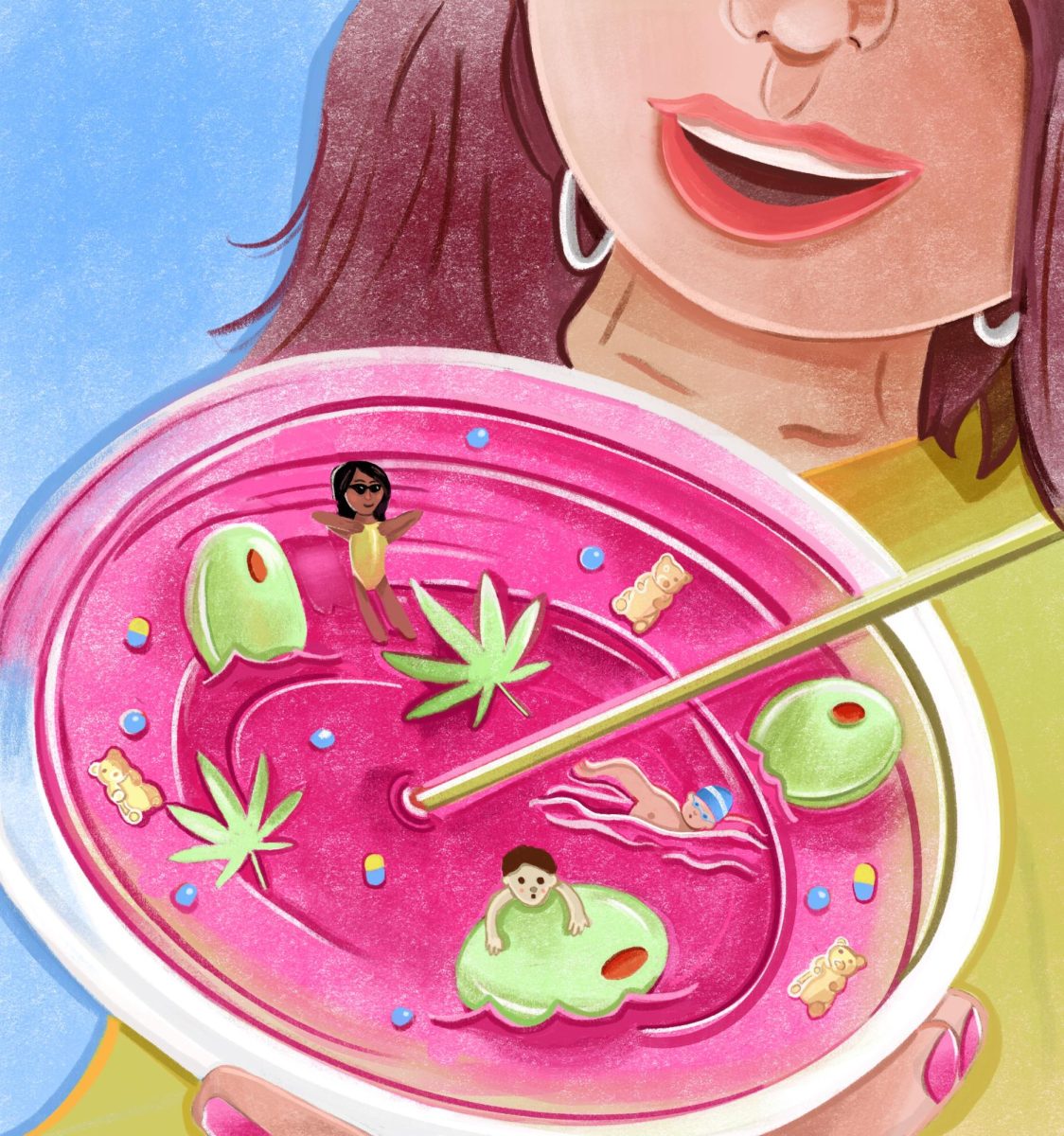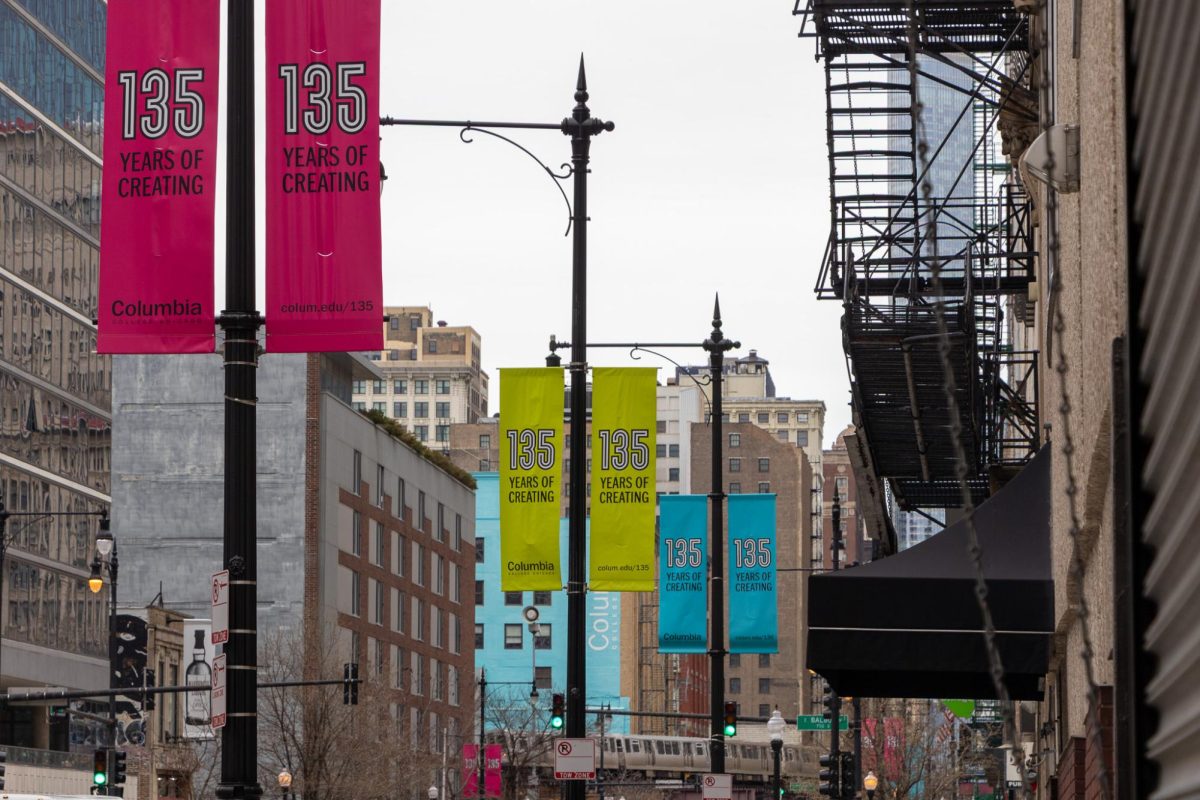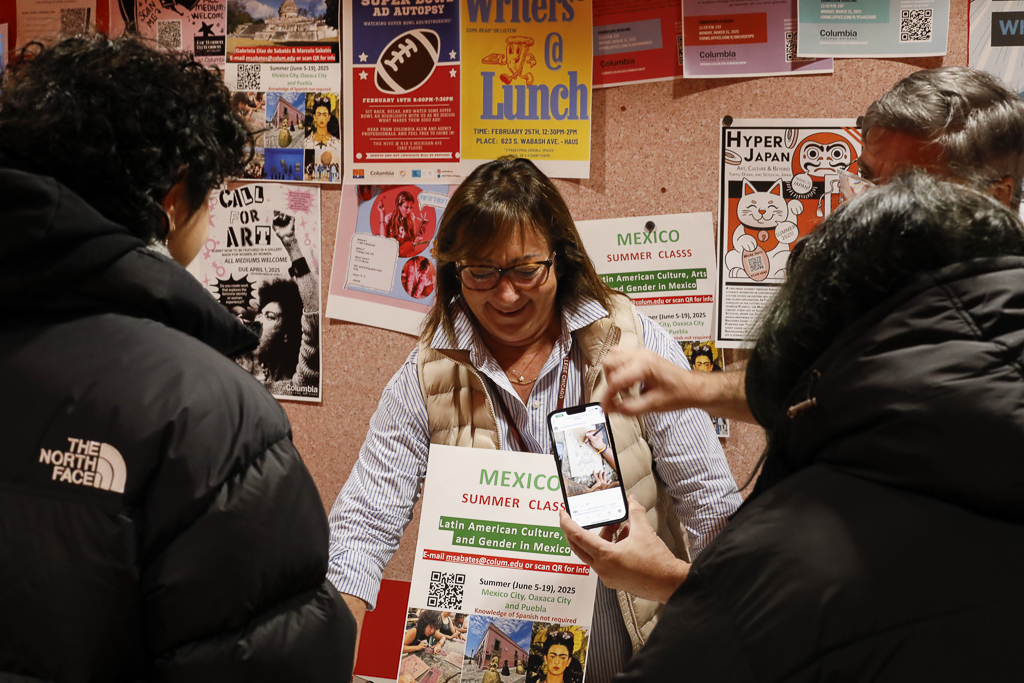While observing those under the influence of alcohol and drugs, EJ Muñoz, a senior graphic design major at Columbia, came to the conclusion that in instances where substance-driven violence occurs, marijuana isn’t likely to be the main proponent.
“There are a lot of fights that happen, and you never know what’s going to happen when alcohol is in the picture,” Muñoz said.
That’s one of the reasons Muñoz favors pot over alcohol, following a nationwide trend with other college-age members of Generation Z.
According to 2023 data from the National Survey on Drug Use and Health conducted by the Substance Abuse and Mental Health Services Administration, 49.6% of Gen Z who are 18-24 said they drank alcohol in the past month. Rewind a decade and 59.6% of Gen Z said that they were alcohol users.
Roughly 69% of young adults ages 18-24 said that they prefer cannabis to alcohol, according to a 2022 study conducted by New Frontier Data, a market research company focused on the cannabis industry. Furthermore, 56% also said that they have replaced their alcohol use with cannabis consumption.
Both are legal in Illinois at the age of 21.
“If I’m looking for a buzz, I’ll probably tend towards marijuana first,” said Ian Springer, a junior film and television major. “Alcohol for me is purely social, but I do enjoy it.”
Muñoz, who is a marijuana user, smoked before he ever tried alcohol, attributing the recreational activity to being “more comfortable” compared to the other.
“After I got into the whole drinking for the social occasions stuff, I just found that I enjoyed that mellow feeling of marijuana more than something unpredictable like alcohol,” Muñoz said.
Muñoz said that the downward trend of alcohol consumption among college students can be connected to factors such as gym culture and money.
“A lot of people are more into fitness, so they’re more aware of the consequences of drinking alcohol and what it can do to their body,” he said.
Lauryn Valencia, a senior traditional animation major, observes more marijuana use among Columbia students than drinking.
“I think people can carry pens or even just smoke outside of campus buildings,” Valencia said. “I don’t dorm here, but even with that, I still see a lot of people using it.”
Carly Novoselsky, a clinical professional counselor and founder of an LGBTQIA+ sober group called Queer Sober Social, said the legalization and access to cannabis has created a “go-to option” for Gen Z, lowering the need to consume alcohol.
Pot was legalized in Illinois in January 2020, allowing adults over the age of 21 to possess, consume and purchase cannabis in the state.
“Alcohol is an expensive habit, and Gen Z is known to be more mindful about their spending habits in today’s tight economy,” Novoselsky said. “Social media also plays a big role as Gen Z lives in a time where everything is easily recorded.”
At Burnham Liquors in the South Loop in late February, a six-pack of Pabst Blue Ribbon cost $7.99 and a six-pack of Daura Damm cost $10.99. A 12-pack of Heineken cost $21.99.
By comparison, the price for Papaya Syrup, a single joint, was $15 at Spark’d Dispensary in the South Loop. Space Face, which holds five joints, costs $39.
Erin De Leon, a senior music business major who is an occasional drinker, also said that Gen Z’s switch from alcohol to marijuana can be attributed to rising costs, saying that a lot of her friends go to stores to get liquor that is less costly than buying drinks at a club.
According to a 2024 national survey conducted by Ellucian, 57% of college students said that they had to choose between college expenses and basic needs, such as food and clothing.
“Nowadays, it’s $17 for a drink at the club,” Muñoz said. “Not a lot of people want to spend that kind of money nowadays. Now that weed is legalized, it’s very accessible; you see one dispensary every block or so nowadays. I know a lot of people who smoke weed more often than they drink I would say.”
On the contrary, senior illustration major Dirt Simmons observed the opposite in their friend group, saying that they and their friends “don’t really partake in weed” as much as other people that they have interacted with. But Simmons said they have “definitely” noticed a move towards marijuana use versus drinking.
Simmons attributed this shift to personal problems with alcohol, such as alcoholic parents.
“I know a lot of people that are like, ‘I’m not going to touch alcohol because my parents were in AA and they’ve abused me,’ but then they are smoking all the time,” they said.
Kameron Clepper, a sophomore photography major, is “relatively” against substances and abstains from using them. He believes the shift towards marijuana has a lot to do with how alcohol is perceived today and how aware more people are of the risks that it presents, such as drunk driving fatalities and addiction.
According to Clepper, older generations all had their way of managing substances in their time, saying that “there [are] just different generations in different times with different perspectives.”
“I know younger people in general don’t like cigarettes,” Clepper said. “They don’t consume it and they’re a bit wiser when it comes to using substances and they’re a bit more acknowledging of the health negative effects.”
Clepper brought up how studies of an individual’s marijuana consumption can show negative results, such as memory loss, mental degradation and “overall mental stability in terms of being able to be sober and do stuff.” To Clepper, this presents a “lack of care.”
“In some aspects, if you use marijuana for medical purposes, [people] say it genuinely helps, but if you use it in a manner of addiction and you claim that there are no side effects behind it, then I think you should probably do a bit of research,” Clepper said.
To Muñoz, the stigma behind smoking marijuana has decreased, saying that he sees “all types of different people, all types of ages” when he goes into a dispensary, from the likes of “college kids to senior citizens and businessmen.”
“I know a lot of people who are smoking weed more often than they drink,” Muñoz said. “I think our society nowadays is a lot more accepting and supportive of people who decide to say they don’t want to drink, so they’re gonna support their decision in whatever it is.”
In terms of stigmatization, Valencia said that “a lot of people don’t care as much anymore,” feeling that even teachers who may be aware if someone is under the influence “don’t really mind.”
“I don’t really care what people do with their money or with their body,” she said. “As long as people are safe with it, I don’t really think it matters much for me.”
Copy edited by Manuel Nocera
Resumen en Español:
Los estudiantes universitarios, especialmente la Generación Z, están favoreciendo cada vez más la marihuana sobre el alcohol debido a factores como el costo, la accesibilidad y una mayor conciencia sobre los efectos negativos del alcohol. Muchos, como EJ Muñoz, consideran que el cannabis es una alternativa más predecible y relajante en comparación con el alcohol, que a menudo se asocia con la violencia y problemas de salud. Los estudios muestran que el consumo de alcohol entre la Generación Z ha disminuido en la última década, con muchos optando por la marihuana en su lugar. El aumento de costos, la cultura del gimnasio y la normalización del uso del cannabis han contribuido a esta tendencia, haciendo que los dispensarios sean algo común y reduciendo el estigma en torno a la marihuana.
Muchos estudiantes ven la marihuana como una alternativa más segura y aceptable, otros, como Kameron Clepper, advierten sobre sus efectos a largo plazo, como la pérdida de memoria y la adicción. Algunos, como Dirt Simmons, señalan que experiencias personales con el abuso de alcohol en sus familias influyen en sus elecciones. A pesar de las diferentes perspectivas, la Generación Z es generalmente más consciente del uso de sustancias y muestra una creciente aceptación de las decisiones individuales con respecto al alcohol y la marihuana.
Resumen en Español por Manuel Nocera
Texto editado por Doreen Abril Albuerne Rodriguez











